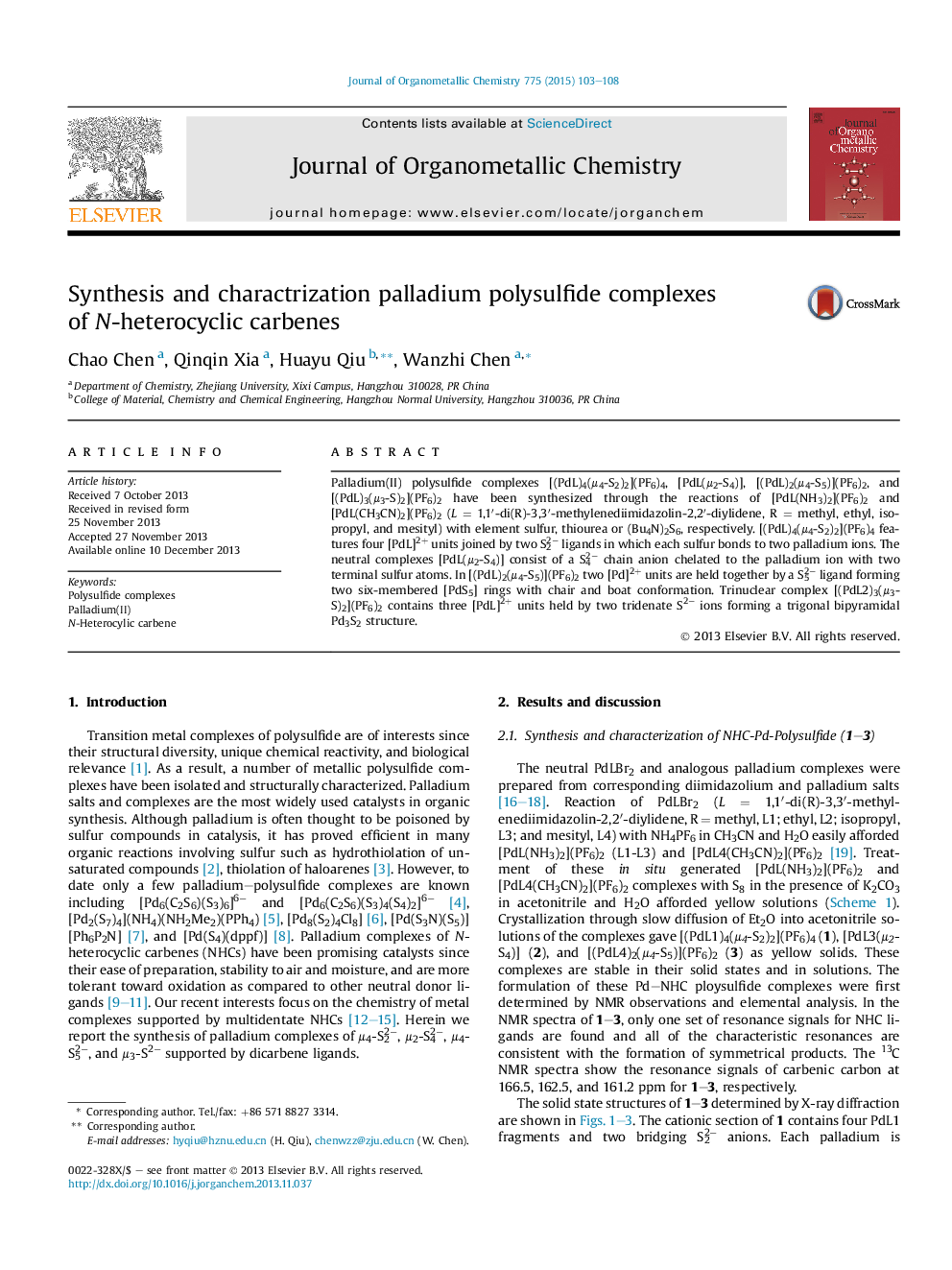| Article ID | Journal | Published Year | Pages | File Type |
|---|---|---|---|---|
| 1322199 | Journal of Organometallic Chemistry | 2015 | 6 Pages |
•We prepared palladium polysulfide complexes of N-heterocyclic carbenes.•The structures of the NHC complexes consisting of S42−, S52−, and S22− anions were characterized.•The structures vary depending upon the 1,1′-di(R)-3,3′-methylenediimidazolin-2,2′-diylidene ligands.
Palladium(II) polysulfide complexes [(PdL)4(μ4-S2)2](PF6)4, [PdL(μ2-S4)], [(PdL)2(μ4-S5)](PF6)2, and [(PdL)3(μ3-S)2](PF6)2 have been synthesized through the reactions of [PdL(NH3)2](PF6)2 and [PdL(CH3CN)2](PF6)2 (L = 1,1′-di(R)-3,3′-methylenediimidazolin-2,2′-diylidene, R = methyl, ethyl, isopropyl, and mesityl) with element sulfur, thiourea or (Bu4N)2S6, respectively. [(PdL)4(μ4-S2)2](PF6)4 features four [PdL]2+ units joined by two S22− ligands in which each sulfur bonds to two palladium ions. The neutral complexes [PdL(μ2-S4)] consist of a S42− chain anion chelated to the palladium ion with two terminal sulfur atoms. In [(PdL)2(μ4-S5)](PF6)2 two [Pd]2+ units are held together by a S52− ligand forming two six-membered [PdS5] rings with chair and boat conformation. Trinuclear complex [(PdL2)3(μ3-S)2](PF6)2 contains three [PdL]2+ units held by two tridenate S2− ions forming a trigonal bipyramidal Pd3S2 structure.
Graphical abstractPalladium(II) polysulfide complexes containing μ4-S22−, μ2-S42−, μ4-S52−, and μ3-S2− ions have been synthesized through the reactions of [PdL(NH3)2](PF6)2 and [PdL(CH3CN)2](PF6)2 (L = 1,1′-di(alkyl)-3,3′-methylenediimidazolin-2,2′-diylidene, L1-L4, alkyl = methyl, ethyl, isopropyl, and Mes) with element sulfur, thiourea or (Bu4N)2S6, respectively.Figure optionsDownload full-size imageDownload as PowerPoint slide
